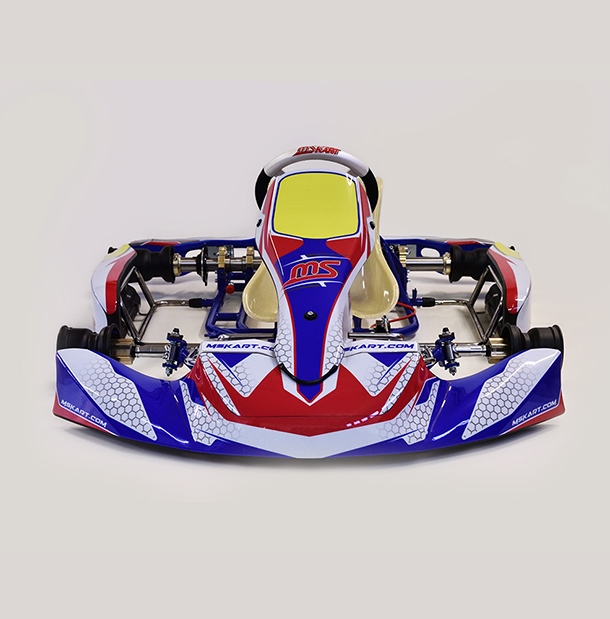Frequent Searches
Frequent Searches

 Exclusive Content
Exclusive Content

It is now difficult for the shapes or geometries of a new chassis to be a big surprise. All the main manufacturers follow consolidated models that do not deviate virtually at all from the classic forms that have achieved the best results in the history of karting.
The Czech company MS Kart does not deviate from this approach, since it has remained faithful to the design already used in previous versions of the chassis for the new approval of its Blue Phoenix. The body is made up of tubes with a 30 mm diameter and is suitable for both single-speed and geared classes.
The geometries of the chassis are a 1045 mm wheelbase and a width of the rear and front tracks (on the body) of 640 and 730 mm respectively. There is a removable front bar positioned before the C of the spindles, and a removable rear bar. The transition zone between the rear and the front axle has tubes with the most classic geometry, with double curvature (compared to the less frequent single V-shaped curvature).
Most of the development work involved the characteristics of the chassis tubes, with many tests carried on different types of tubes made of various materials, both in terms of hardness and elasticity.
Two fundamental characteristics that are in no way similar: in fact, a steel tube can be very hard to bend (stiffness), and if it is not bent too much it can return to its initial position with greater or less rapidity (elasticity). Both hardness and elasticity significantly determine the behaviour of the chassis and, consequently, the set-up and performance.
Not only that: the quality of the steel also determines performance consistency, both in individual races and in the long term.